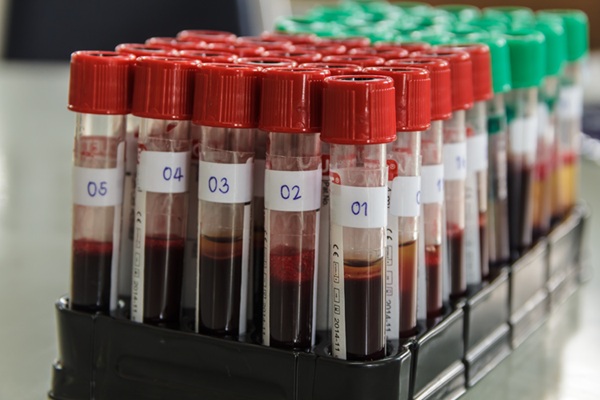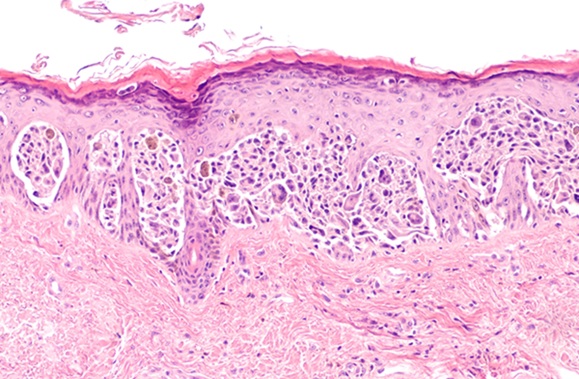Nucleic Acid Preparations Identify Norovirus and Mycoplasma pneumonia
|
By LabMedica International staff writers Posted on 15 Oct 2013 |

Image: DiaSorin's LIAISON IXT for the purification of nucleic acids (Photo courtesy of Diasorin).
Extraction kits provide high yield, high purity nucleic acid preparations for sensitive and accurate molecular identification of Norovirus and Mycoplasma pneumonia.
Magnetic bead technology extraction kits concentrates target microorganisms from a variety of sample matrices, including urine, sputum, culture, and swabs, and then provides a purified nucleic acid extraction for downstream molecular analysis. No enzymatic pretreatment or prior heat treatment is required.
The DiaSorin (Saluggia, Italy) BUGS’n Beads nucleic acid extraction kits, for use with the automated DiaSorin LIAISON IXT/Arrow instruments, provide a highly purified nucleic acid preparation from patient samples for sensitive and accurate molecular confirmation of these microorganisms.
Outbreaks of Norovirus, also known as winter vomiting disease, can spread quickly in certain semiclosed environments and frequently cause ward closures in hospitals during the winter months. Human noroviruses cannot be grown in cell culture and so diagnostic methods focus on the detection of viral RNA or antigen.
Mycoplasma pneumonia is a common cause of atypical pneumonia. Since other, less common etiological agents exist, which require a different course of treatment, identification of bacterial DNA in clinical samples has become increasingly important in establishing the cause of atypical pneumonia so that the optimal directed therapy can be provided for patients.
During winter, clinical laboratories experience an increase in test requests for certain seasonal pathogens such as Norovirus and Mycoplasma pneumonia. The DiaSorin nucleic acid extraction kits, for use with the automated DiaSorin LIAISON IXT/Arrow instruments, provide a highly purified nucleic acid preparation from patient samples for sensitive and accurate molecular confirmation of these microorganisms.
DiaSorin BUGS’n Beads can be used for the extraction of nucleic acid from a variety of pathogens, including Mycobacterium tuberculosis, Enterovirus, MRSA, Norovirus, Escherichia coli, Legionella, Mycoplasma pneumonia, Chlamydia pneumonia, and Helicobacter pylori.
In addition to BUGS’n Beads, DiaSorin nucleic acid extraction kits are available for the extraction of RNA or DNA, the extraction of DNA from stool and blood samples, and cell separation.
Related Links:
DiaSorin
Magnetic bead technology extraction kits concentrates target microorganisms from a variety of sample matrices, including urine, sputum, culture, and swabs, and then provides a purified nucleic acid extraction for downstream molecular analysis. No enzymatic pretreatment or prior heat treatment is required.
The DiaSorin (Saluggia, Italy) BUGS’n Beads nucleic acid extraction kits, for use with the automated DiaSorin LIAISON IXT/Arrow instruments, provide a highly purified nucleic acid preparation from patient samples for sensitive and accurate molecular confirmation of these microorganisms.
Outbreaks of Norovirus, also known as winter vomiting disease, can spread quickly in certain semiclosed environments and frequently cause ward closures in hospitals during the winter months. Human noroviruses cannot be grown in cell culture and so diagnostic methods focus on the detection of viral RNA or antigen.
Mycoplasma pneumonia is a common cause of atypical pneumonia. Since other, less common etiological agents exist, which require a different course of treatment, identification of bacterial DNA in clinical samples has become increasingly important in establishing the cause of atypical pneumonia so that the optimal directed therapy can be provided for patients.
During winter, clinical laboratories experience an increase in test requests for certain seasonal pathogens such as Norovirus and Mycoplasma pneumonia. The DiaSorin nucleic acid extraction kits, for use with the automated DiaSorin LIAISON IXT/Arrow instruments, provide a highly purified nucleic acid preparation from patient samples for sensitive and accurate molecular confirmation of these microorganisms.
DiaSorin BUGS’n Beads can be used for the extraction of nucleic acid from a variety of pathogens, including Mycobacterium tuberculosis, Enterovirus, MRSA, Norovirus, Escherichia coli, Legionella, Mycoplasma pneumonia, Chlamydia pneumonia, and Helicobacter pylori.
In addition to BUGS’n Beads, DiaSorin nucleic acid extraction kits are available for the extraction of RNA or DNA, the extraction of DNA from stool and blood samples, and cell separation.
Related Links:
DiaSorin
Latest Technology News
- AI Model Achieves Breakthrough Accuracy in Ovarian Cancer Detection
- Portable Biosensor Diagnoses Psychiatric Disorders Using Saliva Samples
- Cell-Sorting Device Uses Electromagnetic Levitation to Precisely Direct Cell Movement

- Embedded GPU Platform Enables Rapid Blood Profiling for POC Diagnostics
- Viral Biosensor Test Simultaneously Detects Hepatitis and HIV
- Acoustofluidic Device to Transform Point-Of-Care sEV-Based Diagnostics
- AI Algorithm Assesses Progressive Decline in Kidney Function
- Taste-Based Influenza Test Could Replace Nasal Swabs with Chewing Gum
- 3D Micro-Printed Sensors to Advance On-Chip Biosensing for Early Disease Detection
- Hybrid Pipette Combines Manual Control with Fast Electronic Aliquoting
- Coral-Inspired Capsule Samples Hidden Bacteria from Small Intestine
Channels
Clinical Chemistry
view channel
VOCs Show Promise for Early Multi-Cancer Detection
Early cancer detection is critical to improving survival rates, but most current screening methods focus on individual cancer types and often involve invasive procedures. This makes it difficult to identify... Read more
Portable Raman Spectroscopy Offers Cost-Effective Kidney Disease Diagnosis at POC
Kidney disease is typically diagnosed through blood or urine tests, often when patients present with symptoms such as blood in urine, shortness of breath, or weight loss. While these tests are common,... Read moreMolecular Diagnostics
view channel
New Biomarker Panel to Improve Heart Failure Diagnosis in Women
Heart failure affects millions worldwide, yet many women are still misdiagnosed or diagnosed too late. Although heart failure broadly means the heart cannot pump enough blood to the body’s cells, its two... Read more
Dual Blood Biomarkers Improve ALS Diagnostic Accuracy
Diagnosing amyotrophic lateral sclerosis (ALS) remains difficult even with advanced imaging and genetic tools, especially when clinicians must distinguish it from other neurodegenerative conditions that... Read moreHematology
view channel
ADLM’s New Coagulation Testing Guidance to Improve Care for Patients on Blood Thinners
Direct oral anticoagulants (DOACs) are one of the most common types of blood thinners. Patients take them to prevent a host of complications that could arise from blood clotting, including stroke, deep... Read more
Viscoelastic Testing Could Improve Treatment of Maternal Hemorrhage
Postpartum hemorrhage, severe bleeding after childbirth, remains one of the leading causes of maternal mortality worldwide, yet many of these deaths are preventable. Standard care can be hindered by delays... Read more
Pioneering Model Measures Radiation Exposure in Blood for Precise Cancer Treatments
Scientists have long focused on protecting organs near tumors during radiotherapy, but blood — a vital, circulating tissue — has largely been excluded from dose calculations. Each blood cell passing through... Read moreImmunology
view channel
Chip Captures Cancer Cells from Blood to Help Select Right Breast Cancer Treatment
Ductal carcinoma in situ (DCIS) accounts for about a quarter of all breast cancer cases and generally carries a good prognosis. This non-invasive form of the disease may or may not become life-threatening.... Read more
Blood-Based Liquid Biopsy Model Analyzes Immunotherapy Effectiveness
Immunotherapy has revolutionized cancer care by harnessing the immune system to fight tumors, yet predicting who will benefit remains a major challenge. Many patients undergo costly and taxing treatment... Read morePathology
view channel
AI Tool Improves Accuracy of Skin Cancer Detection
Diagnosing melanoma accurately in people with darker skin remains a longstanding challenge. Many existing artificial intelligence (AI) tools detect skin cancer more reliably in lighter skin tones, often... Read more
Highly Sensitive Imaging Technique Detects Myelin Damage
Damage to myelin—the insulating layer that helps brain cells function efficiently—is a hallmark of many neurodegenerative diseases, age-related decline, and traumatic injuries. However, studying this damage... Read moreTechnology
view channel
AI Model Achieves Breakthrough Accuracy in Ovarian Cancer Detection
Early diagnosis of ovarian cancer remains one of the toughest challenges in women’s health. Traditional tools such as the Risk of Ovarian Malignancy Algorithm (ROMA) can struggle to distinguish between... Read more
Portable Biosensor Diagnoses Psychiatric Disorders Using Saliva Samples
Early diagnosis of psychiatric disorders such as depression, schizophrenia, and bipolar disorder remains one of medicine’s most pressing challenges. Current diagnostic methods rely heavily on clinical... Read more
Cell-Sorting Device Uses Electromagnetic Levitation to Precisely Direct Cell Movement
Sorting different cell types—such as cancerous versus healthy or live versus dead cells—is a critical task in biology and medicine. However, conventional methods often require labeling, chemical exposure,... Read moreIndustry
view channel
Co-Diagnostics Forms New Business Unit to Develop AI-Powered Diagnostics
Co-Diagnostics, Inc. (Salt Lake City, UT, USA) has formed a new artificial intelligence (AI) business unit to integrate the company's existing and planned AI applications into its Co-Dx Primer Ai platform.... Read more























